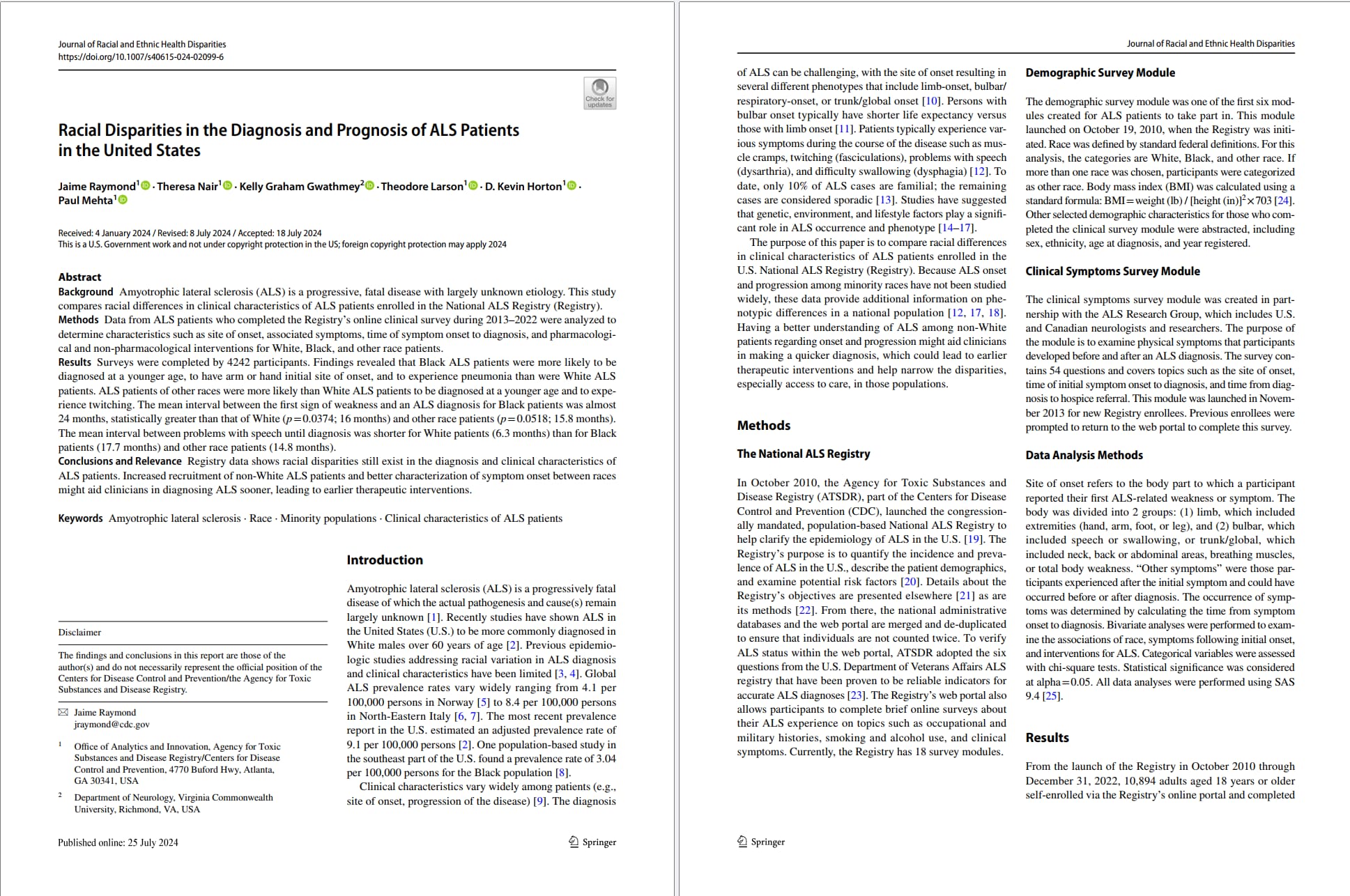Key points
Study found that Black and Other races were more likely than White ALS patients to be diagnosed at a younger age. Registry data shows that racial disparities still exist in diagnosis and clinical characteristics of ALS patients.

Affiliate
Jaime Raymond, Theresa Nair, Kelly Graham Gwathmey, Theodore Larson, D. Kevin Horton & Paul Mehta
1. Office of Analytics and Innovation, Agency for Toxic Substances and Disease Registry/Centers for Disease Control and Prevention (CDC/ATSDR), Atlanta, GA, USA
Summary
This study from the National ALS Registry aims to analyze the racial disparities within the people living with ALS enrolled in the Registry database. Online clinical surveys were completed by 4242 participants between 2013-2022 and the answers were analyzed for characteristics such as site of onset, symptoms, time of symptom onset, and pharmacological and non-pharmacological interventions for White, Black, and other race patients. Findings found that Black and Other races were more likely than White ALS patients to be diagnosed at a younger age.
Registry data shows that racial disparities still exist in diagnosis and clinical characteristics of ALS patients. Increased recruitment of non-White ALS patients in future studies and in the Registry can lead to better characterizations of symptom onsets between races and can aid clinicians in diagnosing ALS sooner and the development of earlier interventions.
